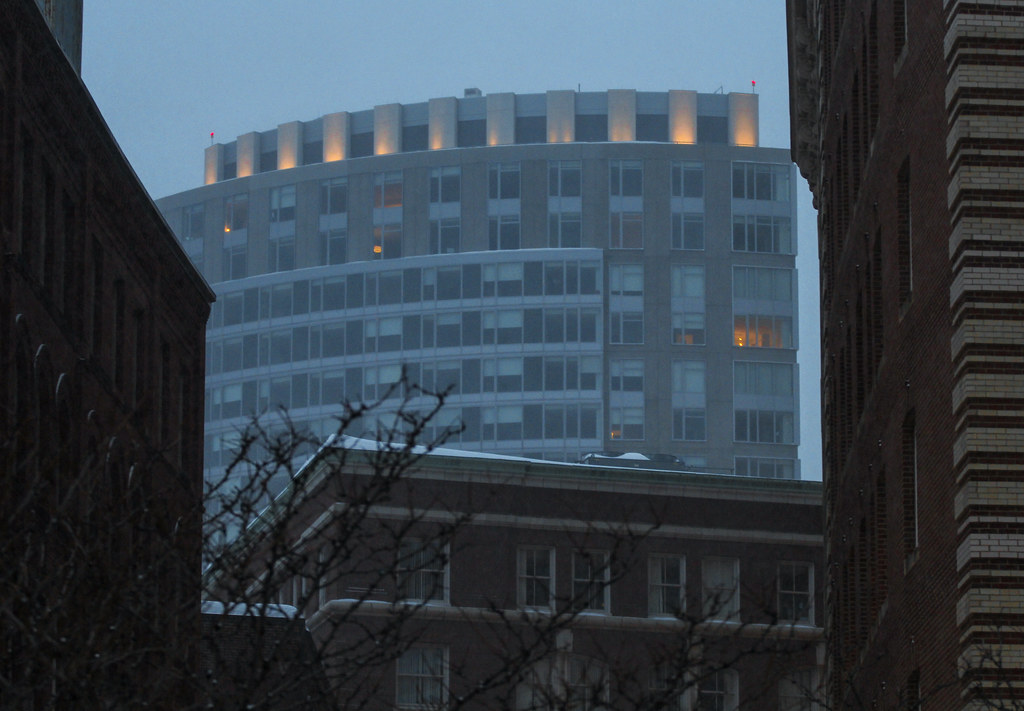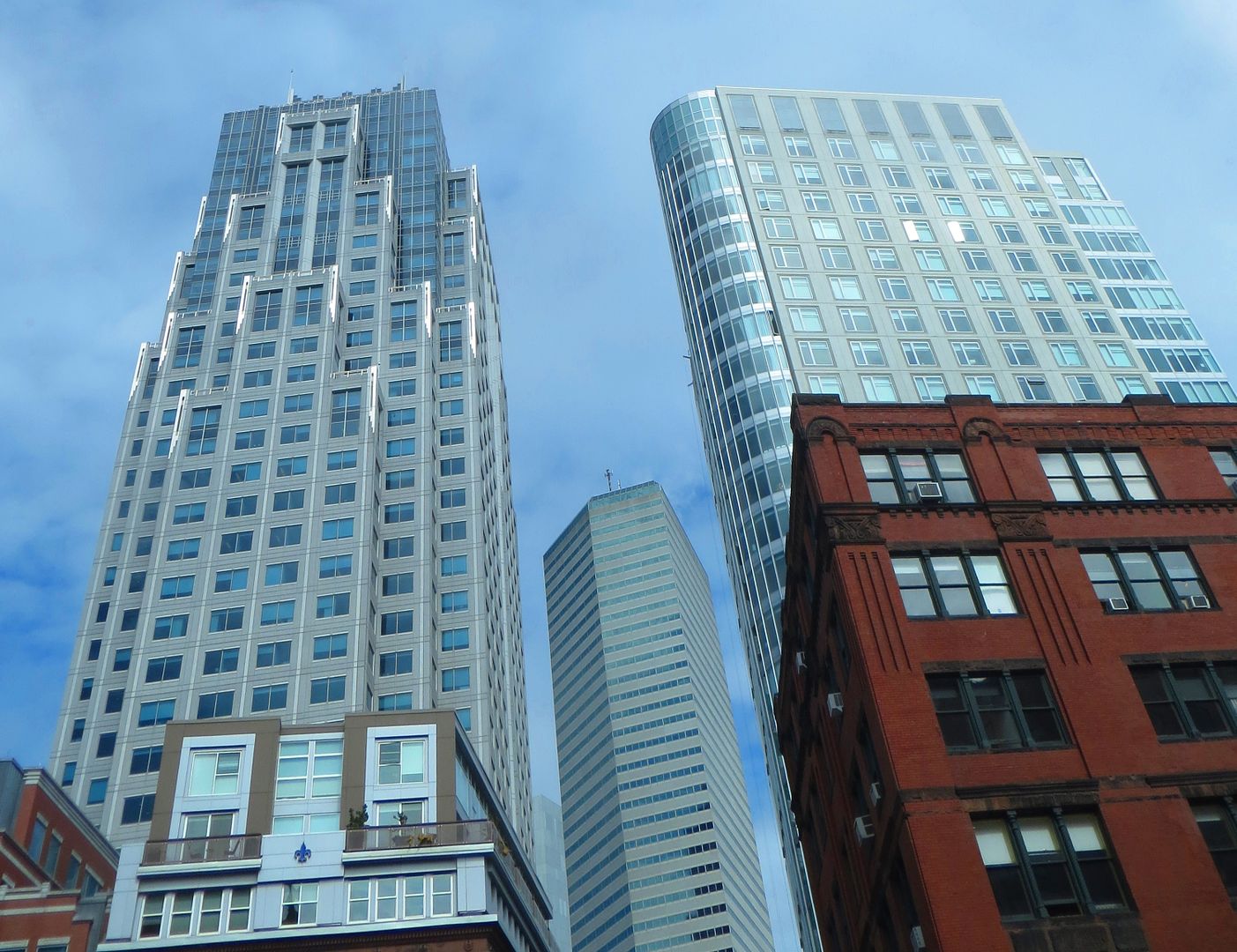You are using an out of date browser. It may not display this or other websites correctly.
You should upgrade or use an alternative browser.
You should upgrade or use an alternative browser.
Radian (Dainty Dot) | 120 Kingston Street | Chinatown
- Thread starter PaulC
- Start date
whighlander
Senior Member
- Joined
- Aug 14, 2006
- Messages
- 7,812
- Reaction score
- 647
I also want to note that the red arches were there long before the Radian went up and are not their responsibility.
Red Arch, Sampan Sail, and the small waterfall with artificial stream are part of the Chinatown Park which opened in 2007 along the Greenway
The whole is a linear park from the Red Arch to the plaza in front of the Paifang at the other end




http://www.rosekennedygreenway.org/parks/chinatown/this one-acre linear park contains design elements drawn from Asian traditions and art work. Designed by Carol R. Johnson and Associates, it contains a serpentine walkway edged by bamboo within bright red sculptural elements and a unique fountain that suggests a waterfall and shallow riverbed.
A section of pavement in Chinatown Park designed by California artist May Sun is patterned after a Chinese chessboard. The square within a circle pattern symbolizes heaven and earth in the Chinese culture. Running through the center of the chessboard is a "river" of stainless steel and colored concrete, depicting a map of Boston focused on Chinatown, South Station and the Fort Point Channel. Visit http://www.crja.com/parks/chinatown.html to learn more about the symbolism and meaning in the park's design.
A modern garden displays plants representative of the natural and created cultural landscape of Asia. The rhododendrons, cherry trees, irises, peonies, and chrysanthemums bloom with bountiful color during the year. Grasses, bamboo, and trees provide texture and structure year round.
http://www.crja.com/parks/chinatown.htmLocated just outside the traditional Chinatown Gate at Beach Street that marks the entrance to Boston's Chinatown neighborhood, Chinatown Park is built over the site of an abandoned off-ramp from the Central Artery Dewey Square tunnel and is approximately 3/4 of an acre size. Being the largest open space within Chinatown, the southern portion of the park's design responds to the vigorous social life of the Asian community by providing an open plaza as a framework for the many festivals, celebrations, and daily activities that up until now have had inadequate or inappropriate venues available. Balancing the paved plaza, the northern end of the park is a serpentine path through gardens richly planted with plants of Asian origin that provides a respite from the busy city streets.
Expressing the park's design theme of balancing memory and prophecy, the CRJA design interprets these traditional Chinese elements of the village festival space, contemplative gardens, gateways, walls, stone, and flowing water, in a contemporary fashion to create a space that is uniquely modern yet with strong references to the past: the contemporary red steel gateway serves as counterpoint to the traditional gate at Beach Street; the stylized sampan sail sculpture rendered in stainless steel, metal fabric, and LEDs in the evening becomes a soft beacon of light; uplit misted grasses recall traditional rice fields, and support frames for tall hardy bamboo plants are translated from traditional materials to sculptures of red steel. Reclaimed seawall stones which originally formed the wharfs onto which Asian immigrants landed in Boston now form the park's focal waterfall and stream. All are united by the creative use of concrete pavers patterned to evoke the scales of a dragon extending the length of the park.

All this was Big Dig mitigation for the disruption to the Chinatown community -- the Arches are supposed to be a symbolic representations of the Paifang -- Great Chinatown Gate @ Beech St.

Update on restaurant:
http://boston.eater.com/2015/1/7/7505887/restaurant-openings-boston-winter-2015
Townsman
TownsmanWhere: 120 Kingston Street, Boston (Downtown/Greenway)
What: "New England farmhouse dining" with shellfish towers, charcuterie, and more.
Who: Owners Matt and Kate Jennings are Boston natives who have been in Providence for the last decade. They closed their restaurant there, Farmstead, Inc., to come back here and open Townsman. Post 390 alum Brian Young will also be in the kitchen.
When: Early February, according to a rep.
Follow: Web / Twitter / Facebook / Instagram
http://boston.eater.com/2015/1/7/7505887/restaurant-openings-boston-winter-2015
Suffolk 83
Senior Member
- Joined
- Nov 14, 2007
- Messages
- 2,996
- Reaction score
- 2,403
Should this restaurant be Chinese food? My gut reaction is yes to keep up with the neighborhood even if it wasn't authentic but maybe not Cuz it would take away from others in vicinity?
Should this restaurant be Chinese food? My gut reaction is yes to keep up with the neighborhood even if it wasn't authentic but maybe not Cuz it would take away from others in vicinity?
Is this building really IN Chinatown? I would say no. Next to it, but not IN it. You have to draw the line somewhere.
whighlander
Senior Member
- Joined
- Aug 14, 2006
- Messages
- 7,812
- Reaction score
- 647
Is this building really IN Chinatown? I would say no. Next to it, but not IN it. You have to draw the line somewhere.
DZH -- this building is on the Greenway
10 years from now anything within a block of the Greenway will label itself as "On the Greenway"
Should this restaurant be Chinese food? My gut reaction is yes to keep up with the neighborhood even if it wasn't authentic but maybe not Cuz it would take away from others in vicinity?
The chef husband and wife team opening this restaurant ran arguably the best restaurant in Providence. Them closing up shop and moving to Boston with more room to work with, plus easier access to great ingredients is a huge win for the culinary scene in the area.
The guy won three consecutive contests at this event (http://cochon555.com/) Cant wait for this place to open.
- Joined
- Sep 15, 2010
- Messages
- 8,894
- Reaction score
- 271
A 3" PVC pipe supplying an A/C unit burst tonight in Townsman in the Radian.
Crazy video from inside:
https://twitter.com/Bayview298/status/604049900683268096/video/1
--
Tweets:
susantran @susantran 2h2 hours ago
#Boston FD says 3inch pvc pipe burst & tons of water flooded #Townsman restaurant. Some areas w 9in of h2o. #7news
https://twitter.com/susantran/status/604053185540575232
susantran @susantran 3h3 hours ago
Flooding at .@TownsmanBoston. Hearing a pipe burst over bar, soaking people but no one hurt. #7News
https://twitter.com/susantran/status/604047394603429889
Crazy video from inside:
https://twitter.com/Bayview298/status/604049900683268096/video/1
--
Tweets:
susantran @susantran 2h2 hours ago
#Boston FD says 3inch pvc pipe burst & tons of water flooded #Townsman restaurant. Some areas w 9in of h2o. #7news
https://twitter.com/susantran/status/604053185540575232
susantran @susantran 3h3 hours ago
Flooding at .@TownsmanBoston. Hearing a pipe burst over bar, soaking people but no one hurt. #7News
https://twitter.com/susantran/status/604047394603429889
I was watching the latest episode of This Old House today. The homeowners of this seasons project went to a recycled granite yard in Wakefield. They selected granite for their front walkway and the employee at the yard said they it was from the Dainty Dot building in Chinatown, Boston. Thought it was interesting.
odurandina
Senior Member
- Joined
- Dec 1, 2015
- Messages
- 5,328
- Reaction score
- 265
is it me, or is Chinatown starting to look a bit decontaminated?
Why not dress up a few blocks a bit more like they do Chinatown in San Francisco? i'm not drinking the San Francisco kool-aid. But their Chinatown is awesome.
http://www.ronsaari.com/stockImages/sanFrancisco/SFChinatownGrantStreet.jpg
http://cdn1.theodysseyonline.com/fi...0087211293841033_10651607614_ba81a44442_b.jpg
Why not dress up a few blocks a bit more like they do Chinatown in San Francisco? i'm not drinking the San Francisco kool-aid. But their Chinatown is awesome.
http://www.ronsaari.com/stockImages/sanFrancisco/SFChinatownGrantStreet.jpg
http://cdn1.theodysseyonline.com/fi...0087211293841033_10651607614_ba81a44442_b.jpg
Boston02124
Senior Member
- Joined
- Sep 6, 2007
- Messages
- 6,893
- Reaction score
- 6,639



